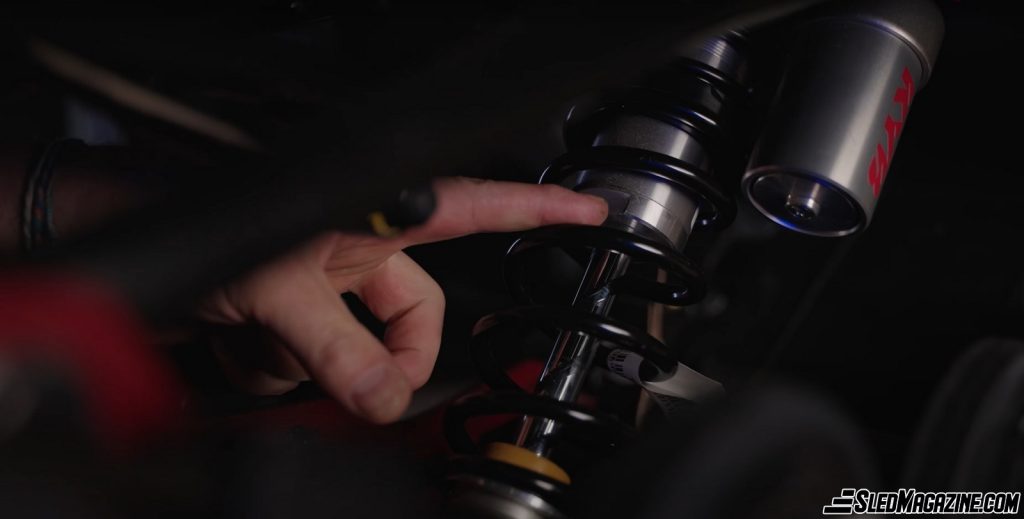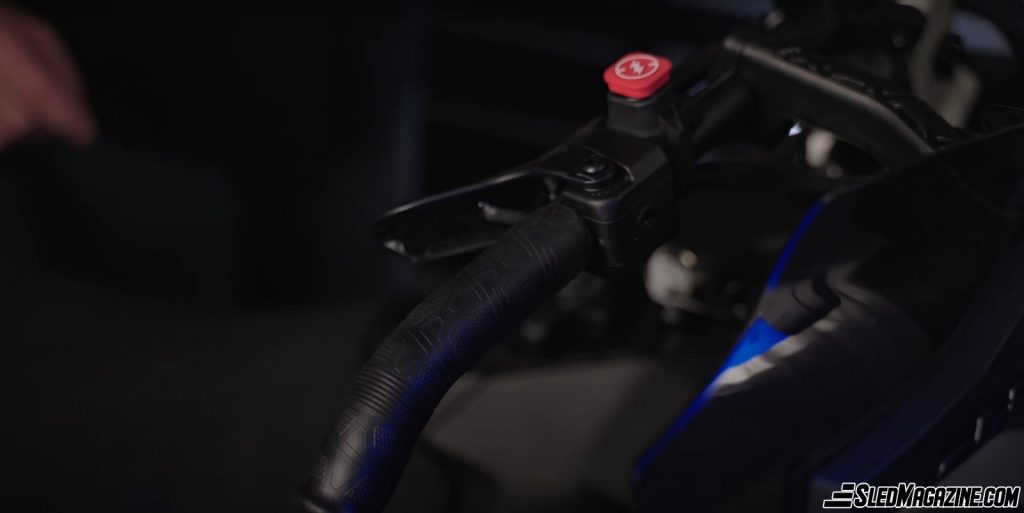Table of contents
ToggleAt the beginning of each season, why not make sure you know the condition of your snowmobile, so you won’t have any surprises on the trail? The best way to find out would be to perform your pre-season maintenance. This maintenance includes a visual inspection and some handling. Here’s how to do it. To avoid getting lost and maximize your time, start from the back to the front or vice versa.
Pre-Season Maintenance: Let’s proceed from the back of the snowmobile to the front.
The suspension

First of all, we check that the suspension is working properly. The suspension is lowered, if it does not rise by itself, some problems may be hidden, such as:
- A defective shock absorber,
- Broken or tired suspension spring
- Lack of lubrication
Condition of the caterpillar

A visual inspection should be done before each season and periodically throughout the winter.
- Inspect the general condition of the track, and see if the spikes are torn or missing
- See if the caterpillar is not stale, dry or cracked.
- Make sure that all the clips are present at every step or every other step.
The slides

These Teflon strips, between your track and suspension, protect and prevent deterioration of these components. The inspection can be done by checking the lateral wear mark. If the mark is still visible, you are on the right track, if not, you must proceed with the replacement.
Caster inspection

A visual inspection and a rotation test should be performed.
For the visual control :
- Check if they are still round: no flat because a flat will cause turbulence while hiking.
- If the rubber band around the casters comes off, they will be oval and will jump. This will result in a vibration when riding and a premature deterioration of the ball bearings.
- Examine the seals on the ball bearings. If they are no longer present, this is an indicator that a bearing will need to be replaced.
For mechanics tests:
- Rotate the caster: if it rotates without slowing down or is noisy, the bearing is dry or worn.
- With the hand, we try to see if there is an excessive play on the axis where it is fixed.
- Apply pressure to the bearing, and rotate it from left to right. If there is any resistance or the bearing is not smooth, the bearing should be replaced.
Shock absorbers or suspension springs.

A visual inspection should be performed in this case:
- Check for leaks of any fluid on the shock absorber wall.
- Check that the spring on the shock absorber is not broken
- For snowmobiles that have a side spring system, make sure they are in good condition.
- With your hand, wiggle the shock absorber from left to right, analyzing for wear where the attachment points are.
Lubrication of the bridge.
Depending on the make and model of your snowmobile, it will be equipped with lubrication points at certain locations such as:
- At each pivot point.
- At the base of the shock absorbers.
Note that the lubrication points’ locations may differ from manufacturer to manufacturer. Tip: do not apply too much lubricant when lubricating, rubber and grease do not mix well.
Handlebars


The handlebars have several elements to examine:
- Brake fluid level.
- Check the operation of the brake lever.
- Operate the throttle lever to make sure it does not jam.
- Check that the handlebars are well fixed and not excessively loose
Under the hood


Here is a list of components to inspect under the covers:
- The levels of liquids such as injection oil, chain case oil, and antifreeze liquid.
- The condition of the springs for the exhaust system.
- Liquid leakage
- Condition of the starting rope.
- Damaged wiring or mouse nest.
- Condition of the belt and its correct positioning.
- Brake pad wear
- Check the condition of the primary and secondary pulleys.
Front suspension and steering

For the front suspension, see if everything looks in good condition:
- Check for any liquid leaks on the shock absorber wall.
- Check that the spring on the shock absorber is not broken
- Inspect the stabilizer bar for proper attachment
- Inspect steering rods for straightness
- Lubricate the ball joints with penetrating oil
- Analyze if you will need an alignment
Skids and rails.


- The skis must not be broken and must be straight.
- The rubber pads between the skids and the mounting arms must be present.
- Lift the ski and check the wear level of the healds, and notice the condition of the carbide or their physical condition.
Running check
Outside or in a well-ventilated area, elevate the snowmobile and start it.
- Revolutionize the engine
- Check the operation of the headlights and the brake light.
- Inspect for fluid leakage again.
- Test the brake.
- Charge your battery as needed.
- Observe if the belt is still at the right height in the secondary pulley.
- Rotate the track, it should be in the center. Notice the gap between the track guides and the track, you will get an idea if it is centred.
Warning:
Do not leave the snowmobile running for too long as it will overheat.
Ready for the new season.
Early season maintenance is a simple task to accomplish and is easily done at home. You should perform these steps every fall. It is recommended to use the original or recommended products. The steps may vary from brand to brand. Feel free to modify this list to reflect the needs of your snowmobile. Ask a specialist or your dealer if you have any doubts or questions about specific points, techniques or products.


